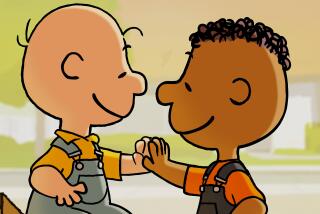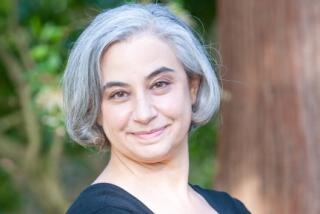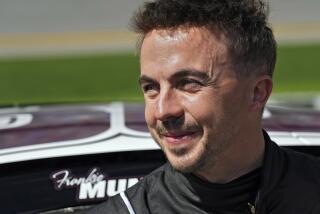Facing Loss but Keeping Hope
Fathers always underestimate how mature their children are. In my case, it took a death in the family to show me how much my “babies” have grown. And for my 6-year-old son, Frankie, in particular, the loss of a beloved great aunt had a significant consolation. His caring reaction to the grief of the adults around him marked the latest step in his fight against autism, a severe neurological disorder.
Frankie’s autism was first diagnosed four years ago. I’ve written about him every holiday season since, not just to share information about autism--the third most common developmental disability among children--but also to offer encouragement to other parents with autistic children. For despite all the challenges Frankie faces, he’s made remarkable progress.
The number of children diagnosed with autism and related disorders like Asperger’s syndrome and pervasive developmental disorder keeps growing. Cure Autism Now, a national organization of autism researchers and parents whose children suffer from the disability, estimates that one of every 500 children have autism or related disorders.
But Frankie’s experience proves that many of those children can recover if intervention occurs early enough. With the right combination of therapies and educational opportunities, autistic people can become productive members of mainstream society, rather than being institutionalized, as sometimes happened in the past.
The foundation of Frankie’s treatment remains the intensive behavior modification provided by the Lovaas Institute for Early Intervention, established by a pioneering autism researcher at UCLA, Dr. Ivar Lovaas. But this year Frankie’s big breakthrough came through a treatment program called Fast Forward.
Originally designed to help children with dyslexia, Fast Forward uses computer games to hone the listening skills of children so that they hear the nuances of speech more clearly. After spending most of the summer in Fast Forward sessions, Frankie in the fall was able to enter a mainstream first-grade class at a Glendale public school.
Frankie is accompanied in his classroom by a school district aide, Jeff Decker, whose own background in behavior modification was augmented through training by Lovaas therapists. Frankie’s teacher, Kristy Peterson, and his 19 classmates have also been wonderfully supportive.
What made this holiday season particularly nice is the fact that, for the first time since he was diagnosed, Frankie was acutely, excitedly and happily aware of Christmas. Like any normal child, he chatted incessantly about Santa, Rudolph, the Grinch and other seasonal characters. He sang carols and other holiday songs and eagerly helped decorate our Christmas tree.
Last month, as my wife, Magdalena, unpacked some decorations, Frankie found an old Santa Claus costume in the mix. Still in his Halloween mode, he put the oversized outfit on and paraded through the house shouting “Ho ho ho.” Magdalena captured the moment on film, and that photo became the Christmas card we sent to our family this year.
I was addressing those cards two Saturdays ago when I called my uncle, Joseph Torres, to ask about his wife, Esperanza, who has been seriously ill with severe diabetes.
Aunt Hope--as everyone knew her--meant a lot to my family. Ever since my own mother died 15 years ago, we have focused holidays and special family gatherings around her Mission Hills home.
I was pleasantly surprised when Uncle Joe said Aunt Hope was in fine spirits. She had even found the strength to go shopping for a Christmas tree. Without realizing it, I rejoiced that Aunt Hope would be with us for another Christmas. Sadly, I was wrong.
The very next morning, in predawn darkness, Uncle Joe called to tell me Aunt Hope had suffered a diabetic seizure and cardiac arrest during the night. She was dead at 80.
I’d been bracing myself for Aunt Hope’s death for months, so despite my distress I was able to make it through the next two days--a rosary service in her memory, the funeral Mass and her burial. But as my grief fades, I will always carry special memories of how my two children conducted themselves during those somber days.
My daughter, Valentina, spoke beautifully at the Mass, delivering a heartfelt eulogy to Aunt Hope. I really shouldn’t have been surprised. Although I too often still think of her as an adolescent, she’s 23 now and a Stanford graduate.
But Frankie was the biggest surprise.
He was curious, as any small child is when first facing the reality of death. He was full of questions, like where heaven is and whether Aunt Hope would ever return from living there with Jesus. But he was also caring.
His therapists have tried to explore feelings like joy and sadness with him, concepts often difficult for children with autism to grasp. It was clear from his subdued manner after Aunt Hope died that Frankie does understand the concept of sadness, as surely as he comprehends the joy of Christmas.
Frankie still has lots of growing up to do, and difficult challenges ahead. Sometime next year, we will phase out of the Lovaas program and face the prospect of Frankie doing his classroom work alone or with minimal support from an aide.
But even amid the sadness of family tragedy, I became more confident than ever that Frankie will continue to overcome his autism. Not just because he has family, therapists, teachers and classmates who support him, but because he has a special new angel watching over him--an angel named, so very aptly, Hope.
Frank del Olmo is an associate editor of The Times and a regular columnist.


